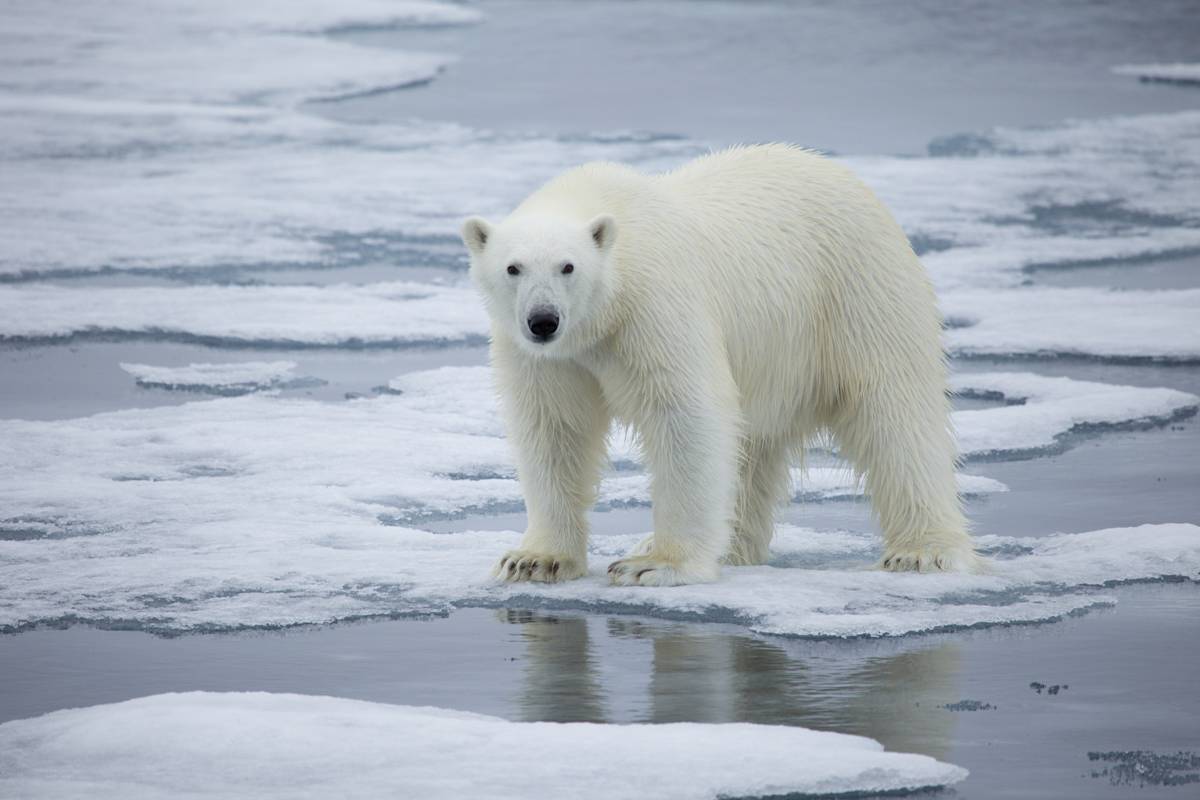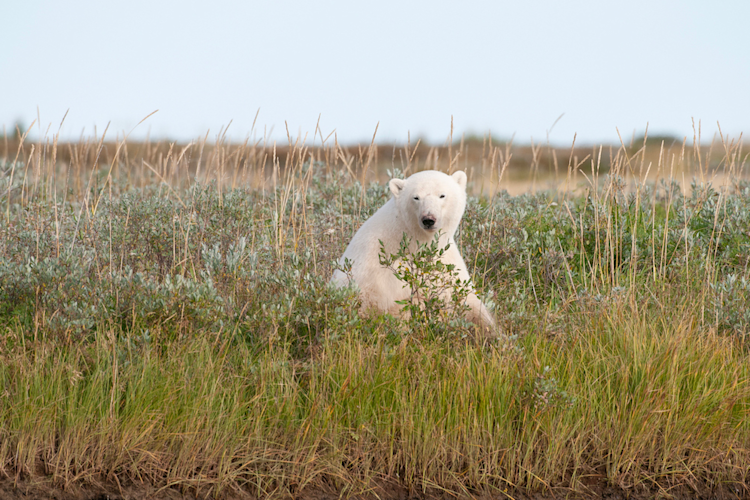Mating season
Not every bear is laser-focused on accumulating calories in the form of seal blubber, however. One subset of the population has more pressing priorities in spring. Guided by scents that females leave behind in their paw prints that indicate they are in estrus, male polar bears set out in search of a mate.
“Male bears will emaciate themselves during breeding, and treat mating as a primary activity,” says York. “It's definitely a kind of hormonal takeover, if you will, in terms of prioritizing how they spend their time. ‘Should I eat, or should I find a mate?’ It seems like in certain times of the spring, it's mate, mate, mate.”
A changing Arctic
All the above is how spring has historically unfolded for polar bears. In a warming Arctic, however, change is afoot, and not for the benefit of polar bears or other Arctic wildlife. Recent research has confirmed that on average spring sea ice is melting three to nine days earlier than previously, giving polar bears less time to accumulate the calories they need to see them through the less-productive months ahead – a problem exacerbated by the fact that fall freeze-up is on average occurring a similar number of days later, meaning that polar bears may have as much as 18 days fewer on the ice each year.
That isn’t the only issue.
Some parts of the Arctic are seeing less snowfall – which, explains York, is a problem not just for bears but for seals.
“So, in some places, like Svalbard, ringed seals are increasingly being forced to pup on the surface of the ice without any snow cover,” he says. “And as a result, seal pups are being picked off not just by polar bears, but by foxes and seagulls and ravens, driving their reproduction in some areas down to zero.”
There’s more. Warming springs don’t just mean less snowfall. They can also bring rain.
The extra weight of rain, which swiftly freezes, on top of snow can cause disaster for polar bear mothers that have not yet emerged from their maternal dens, York explains, as the den roofs can collapse on them.
“And in places like East Greenland and Svalbard, where polar bears den in fairly steep terrain, it increases the risk of avalanches,” he adds. "One more threat that historically wasn't much of a thing.”
Spring remains the season of bounty for polar bears and much else in the Arctic. But until and unless we take drastic steps to reduce global warming, that bounty will diminish, and polar bear lives, already tough to begin with, will continue to get much harder.
Kieran Mulvaney is a freelance writer who has written extensively about polar bears and the Arctic for publications including National Geographic, The Guardian, and The Washington Post. A native of Bristol, England, he lives in Bristol, Vermont.



















